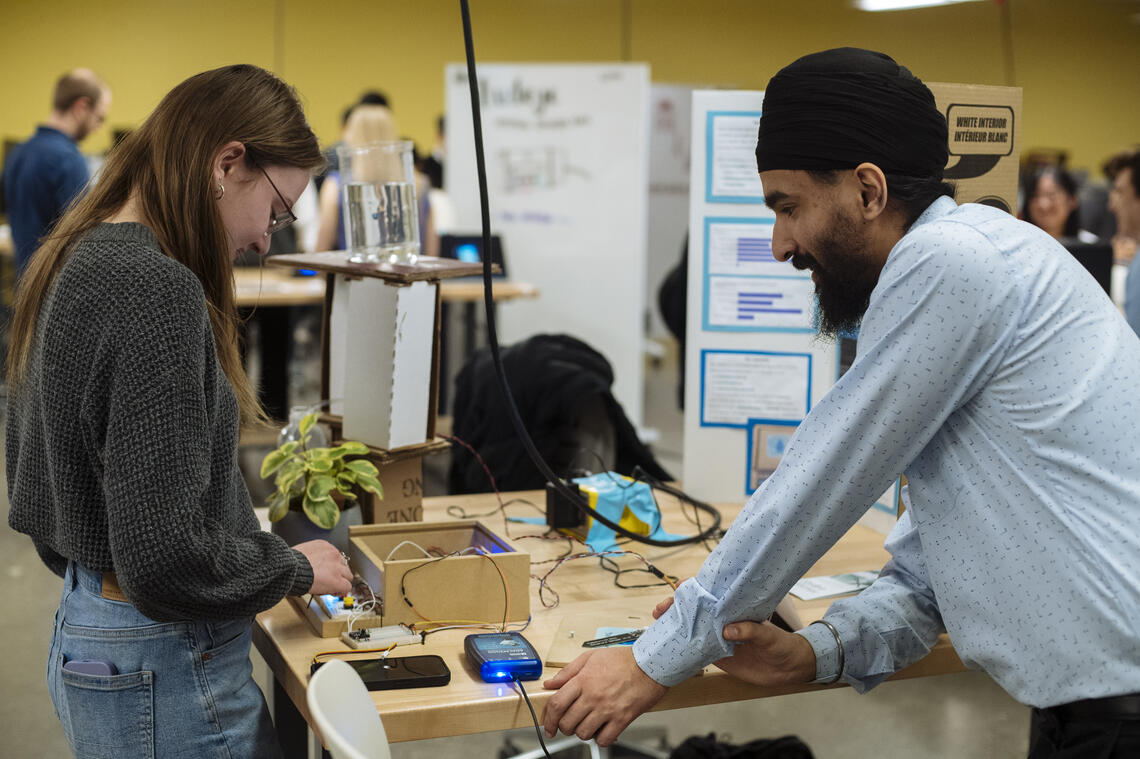May 2, 2023
The good, the bad and the artificial: Bringing artificial intelligence into the classroom

Do you believe that a tool is only as good as its user? Amidst discussions surrounding artificial intelligence (AI) technologies, it’s crucial to have conversations about how users, like students, work with them. Like it or not, the technology is here to stay. Whether it’s complex AI like ChatGPT or an everyday tool like Google Maps, AI is all around us, and it’s important to talk not only about what the tools do but also how the tools are used and can be ethically incorporated into our lives.
It’s no easy feat. Introducing AI technologies into teaching and learning is one way to start supporting students to learn about the ethics of their use. Encouraging AI use in post-secondary classrooms can open the door to conversations about academic integrity and a critical evaluation of the outputs of the technology.
Prof demonstrates ethical use of AI in class
Dr. Laleh Behjat, PhD, says ChatGPT is a useful tool but to think of it like a calculator. “It doesn’t stop students from learning math, just like AI doesn’t stop learning from happening if used correctly.” It’s this kind of critical-thinking approach to AI that Behjat hopes her students take away from using ChatGPT in her classes.
Behjat, a professor at the Schulich School of Engineering, has become increasingly interested in how to effectively teach students in engineering amid a “digital revolution.”
I’m really interested in how we can actually use these technologies to understand how we can do better in teaching and learning.
In an integrated learning class that Behjat teaches, students build their own electronic devices, and one of the biggest challenges students face is coming up with novel ideas.
Enter ChatGPT. When students get stuck, Behjat recommends asking the app. It’s not about accuracy, says Behjat, “the important thing is that the students have the idea and then build upon it.”

Students in Behjat's Integrated Learning Systems course set up a demonstration of the electronic device they created in the class.
Elyse Bouvier
Importantly, it also teaches students to think critically about the answers they are getting and how they will use them. “They have to ask, how do I decipher these things to be correct or not? Or is it possible to actually implement the ideas into my design?
“The idea is not about how much knowledge I can put in my head, but where can I find the knowledge to take something that’s really uncertain and create steps and a strategy,” Behjat says. As the AI element, ChatGPT can create some clarity and rules.
Technology has both pros and cons
Behjat hopes having the AI assistant in the course will help students draw on the algorithmic part of the technology, the knowledge and rule base. But making decisions about the human element including uncertainty must come from the students.
Current technology doesn’t come without drawbacks:
It’s built based on the knowledge we have gathered so far. Unfortunately, women and other underrepresented groups from the global south have had a much smaller share in what’s been collected.
Behjat says it’s important to know AI tools are built from a Western, male-dominated view, and that can be a problem. It can reinforce biases and default to things like suggesting mostly Western names or traditional gender roles.
“This is really important to remember if we’re using these tools in our classrooms.
“Like any technology, it can be used as a good thing or a bad thing. I hope that people will put in thoughtful, ethical considerations and rules for the use of it.”
Are you using AI in your classroom? The Taylor Institute for Teaching and Learning wants to know more! Fill out a short survey to tell us how AI tools have helped in your teaching and learning.
Find more resources on AI and academic integrity on the Taylor Institute website.







